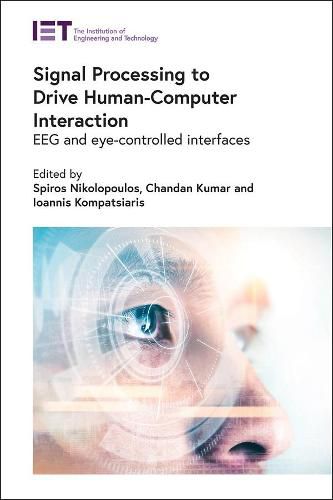Readings Newsletter
Become a Readings Member to make your shopping experience even easier.
Sign in or sign up for free!
You’re not far away from qualifying for FREE standard shipping within Australia
You’ve qualified for FREE standard shipping within Australia
The cart is loading…






The evolution of eye tracking and brain-computer interfaces has given a new perspective on the control channels that can be used for interacting with computer applications. In this book leading researchers show how these technologies can be used as control channels with signal processing algorithms and interface adaptations to drive a human-computer interface.
Topics included in the book include a comprehensive overview of eye-mind interaction incorporating algorithm and interface developments; modeling the (dis)abilities of people with motor impairment and their computer use requirements and expectations from assistive interfaces; and signal processing aspects including acquisition, preprocessing, enhancement, feature extraction, and classification of eye gaze, EEG (Steady-state visual evoked potentials, motor imagery and error-related potentials) and near-infrared spectroscopy (NIRS) signals. Finally, the book presents a comprehensive set of guidelines, with examples, for conducting evaluations to assess usability, performance, and feasibility of multi-model interfaces combining eye gaze and EEG based interaction algorithms.
The contributors to this book are researchers, engineers, clinical experts, and industry practitioners who have collaborated on these topics, providing an interdisciplinary perspective on the underlying challenges of eye and mind interaction and outlining future directions in the field.
$9.00 standard shipping within Australia
FREE standard shipping within Australia for orders over $100.00
Express & International shipping calculated at checkout
The evolution of eye tracking and brain-computer interfaces has given a new perspective on the control channels that can be used for interacting with computer applications. In this book leading researchers show how these technologies can be used as control channels with signal processing algorithms and interface adaptations to drive a human-computer interface.
Topics included in the book include a comprehensive overview of eye-mind interaction incorporating algorithm and interface developments; modeling the (dis)abilities of people with motor impairment and their computer use requirements and expectations from assistive interfaces; and signal processing aspects including acquisition, preprocessing, enhancement, feature extraction, and classification of eye gaze, EEG (Steady-state visual evoked potentials, motor imagery and error-related potentials) and near-infrared spectroscopy (NIRS) signals. Finally, the book presents a comprehensive set of guidelines, with examples, for conducting evaluations to assess usability, performance, and feasibility of multi-model interfaces combining eye gaze and EEG based interaction algorithms.
The contributors to this book are researchers, engineers, clinical experts, and industry practitioners who have collaborated on these topics, providing an interdisciplinary perspective on the underlying challenges of eye and mind interaction and outlining future directions in the field.